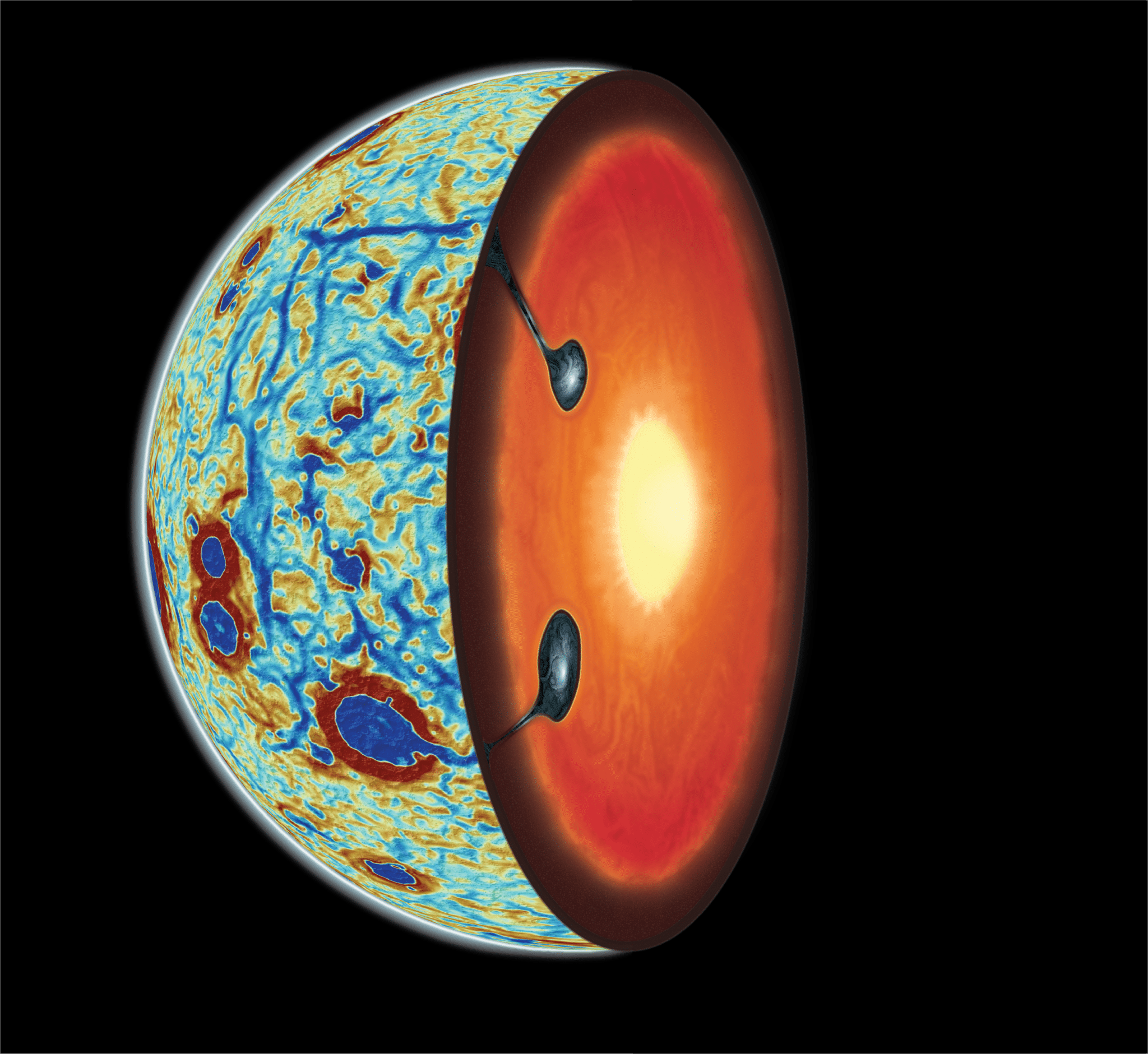About 4.5 billion years ago, a young planet collided with the young Earth. Debris flew into space. Slowly, the debris collected, cooled, and formed a solid, round ball that is our Moon. Scientists agree that this is what happened, but many details remain a mystery. So far.
Not surprising, since most knowledge about the Moon comes from samples taken by Apollo astronauts more than fifty years ago from the rocks they encountered, as well as theoretical models. This revealed something strange. The rock samples contained surprisingly high concentrations of titanium, but satellite observations later showed that this type of rock is only found on the front part of the Moon, that is, the side facing Earth. Astronomers now finally know more about how and why this happens.
An ocean filled with swirling magma
Because the Moon formed quickly and was very hot, it was likely covered by a magma ocean. As the rock slowly cooled and hardened, it formed the mantle and bright crust that we see when we look at the full moon at night. But deeper below the surface, the young moon was completely off balance. According to the models, the recent magma crystallized into the mineral ilmenite, which contains titanium and iron, among other things.
“Because these heavy metals are denser than the mantle underneath, an unstable gravity is created. “You would expect this layer to sink deeper into the Moon’s interior,” explains lead researcher Weigang Liang of Harvard University. University of Arizona. This is what happened at first, but then it mixed with the mantle, melted, and returned to the surface with the titanium-rich lava flow that we see on the surface today.
Inside out
“Our moon has literally turned itself upside down,” says researcher Jeff Andrews Hanna, who participated in the study. Stady in nature I figured out. “But there is little physical evidence that sheds light on the exact sequence of events during this critical phase of the Moon’s history, and there is much debate about the details of what went down.”

Did this material sink little by little as it formed, or did it sink all at once after the moon became completely solid? Did it sink all around the moon and then return to the leading edge, or did it move to the leading edge of the moon and then sink? Also, did it collapse into one big blur or into several small bubbles? “Without a guide, you can choose your favorite model. However, each model has profound implications for the geological evolution of our Moon.
Thick layer of titanium
The researchers were guided by a previous study from China. These models predicted that the thick layer of titanium-rich material beneath the crust first moved to the leading edge of the Moon, perhaps due to a massive impact on its far side. It then sank into the moon's interior through a network of plateaus, somewhat similar to waterfalls. But as the material sank, it left a trace of titanium just below the shell.
“When we saw the model's predictions, it was like a light bulb went off, because we saw exactly the same pattern when we look at subtle variations in the Moon's gravitational field. It reveals a network of dense material hiding beneath the crust,” says Andrews-Hanna.
NASA measurements
Astronomers compared the simulation of the rich sinking ilmenite layer to some small variations in gravity captured by two NASA spacecraft as they orbited the moon in 2011 and 2012. These anomalies surrounded a wide dark area on the Moon's front covered by volcanic flows.
The authors found that NASA's gravity measurements were consistent with simulations of ilmenite layers, and that the gravity field could be used to map the distribution of the ilmenite remains left behind after most of them sank.
Consistent story
“Our analyzes show that the models and data tell a remarkably consistent story,” Liang said. “Ilmenite migrated to the front of the Moon and sank inward by successive steps. This left a trail that created anomalies in the Moon's gravitational field, NASA noted.

But not only what happened, but also when it happened, is now clearer: the gravitational anomalies were interrupted by the largest and oldest impact basins on the Moon's front, and so must have formed earlier. Therefore, the ilmenite-rich layer sank more than 4.22 billion years ago. This is consistent with how it contributed to later volcanism on the Moon.
“For the first time, we have physical evidence showing what happened inside the Moon during a crucial phase of its evolution, and this is very exciting,” Andrews-Hanna concludes. “It turns out that the Moon's oldest history was written beneath its surface. It just needed the right mix of models and data to uncover that story.”

“Coffee buff. Twitter fanatic. Tv practitioner. Social media advocate. Pop culture ninja.”











More Stories
Which can cause an increase in nitrogen.
The Central State Real Estate Agency has no additional space to accommodate Ukrainians.
The oystercatcher, the “unlucky national bird,” is increasingly breeding on rooftops.